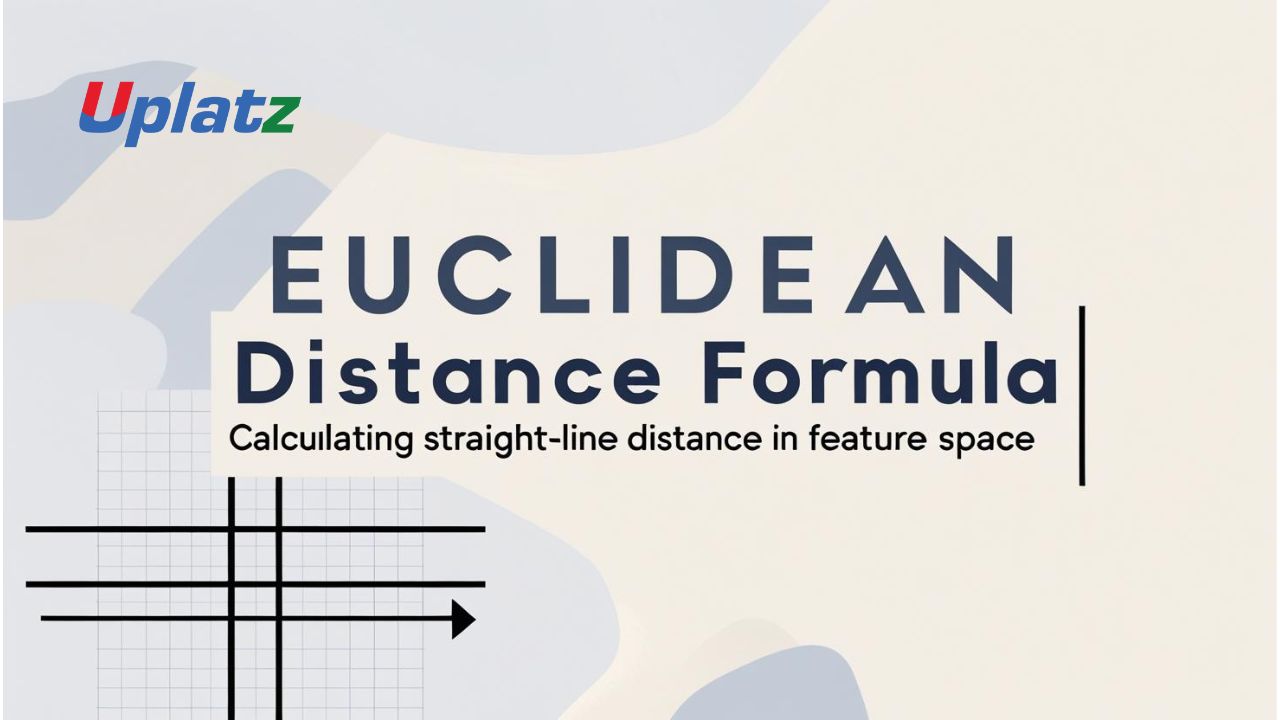 🔹 Short Description:
🔹 Short Description:
Euclidean Distance computes the straight-line distance between two points in Euclidean space. It’s a fundamental metric in geometry, machine learning, and clustering tasks.
🔹 Description (Plain Text):
The Euclidean Distance Formula is one of the most intuitive and widely used methods to measure the distance between two points in space. Rooted in classical geometry, it calculates the “as-the-crow-flies” distance between two coordinates—whether on a 2D plane or in high-dimensional space. This formula forms the backbone of many algorithms in machine learning, computer vision, and clustering.
Formula (for n-dimensional space):
d(p, q) = √[(p₁ – q₁)² + (p₂ – q₂)² + … + (pₙ – qₙ)²]
Where:
- p and q are two points in n-dimensional space
- pᵢ and qᵢ are the coordinates of the respective points
- The squared differences of each dimension are summed and square-rooted
In 2D, it’s the classic distance between two points on a graph:
d = √[(x₂ – x₁)² + (y₂ – y₁)²]
Example:
To find the distance between points A(2, 3) and B(5, 7):
d = √[(5-2)² + (7-3)²] = √[9 + 16] = √25 = 5
This simplicity makes Euclidean Distance a popular choice for K-Nearest Neighbors (KNN), clustering, and anomaly detection, especially when feature data is numeric and well-scaled.
Real-World Applications:
- Recommendation engines: Calculating user or item similarity
- Image recognition: Comparing feature vectors of images
- KNN classification: Determining nearest neighbors to classify new data
- Clustering algorithms: Grouping similar observations (e.g., K-means)
- Robotics and navigation: Calculating shortest path distances
- Outlier detection: Identifying data points far from the rest
Key Insights:
- Simple and interpretable—easy to calculate and visualize
- Assumes features are on the same scale, so preprocessing (e.g., normalization) is often essential
- Works well when the relationship between data is linear and evenly distributed
- Especially effective in low-dimensional spaces, but becomes less useful in very high dimensions (curse of dimensionality)
- Can be used with or without weights for features, depending on context
Limitations:
- Sensitive to scale—larger magnitude features dominate unless scaled properly
- Poor performance in high-dimensional data due to distance concentration
- Does not account for correlation or covariance between features
- Struggles with categorical variables unless encoded appropriately
- May not perform well when the true relationship between variables is non-Euclidean (e.g., on curved manifolds or graph structures)
Despite these challenges, Euclidean Distance remains an essential building block in many data science and machine learning workflows. Its geometric clarity and computational simplicity make it a dependable tool for measuring similarity, distance, and dissimilarity.
🔹 Meta Title:
Euclidean Distance Formula – Measure Straight-Line Distance in ML & Analytics
🔹 Meta Description:
Learn how the Euclidean Distance formula computes the straight-line distance between data points in n-dimensional space. Explore its use in clustering, classification, and distance-based models.
